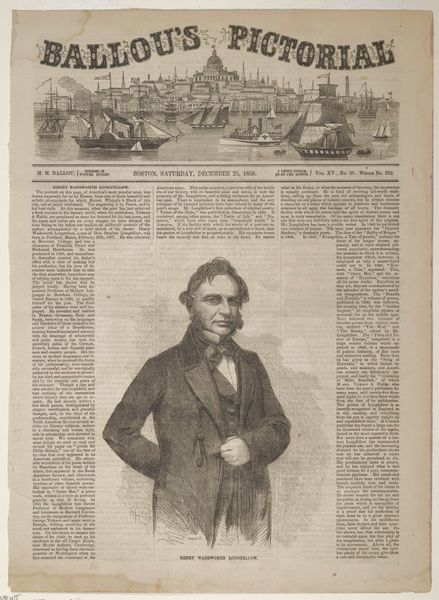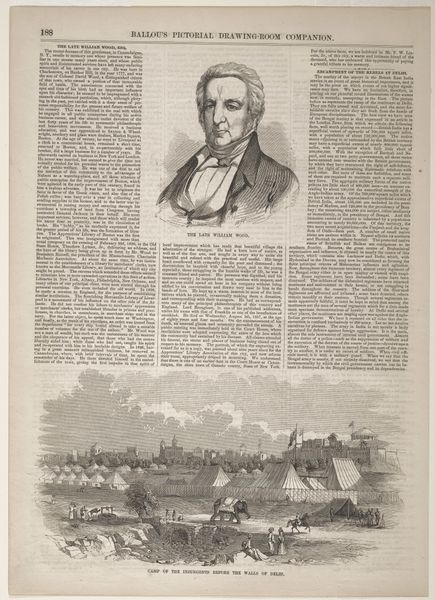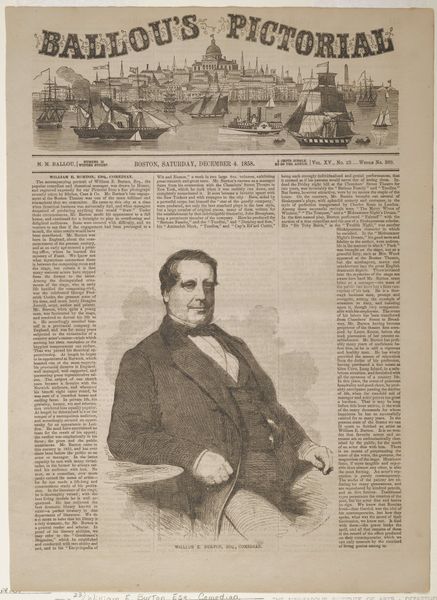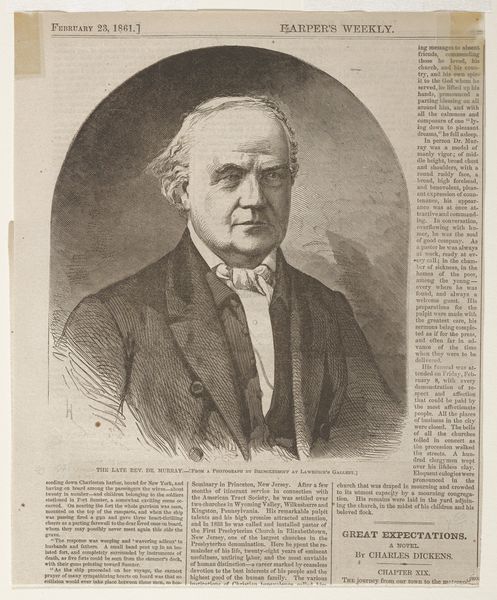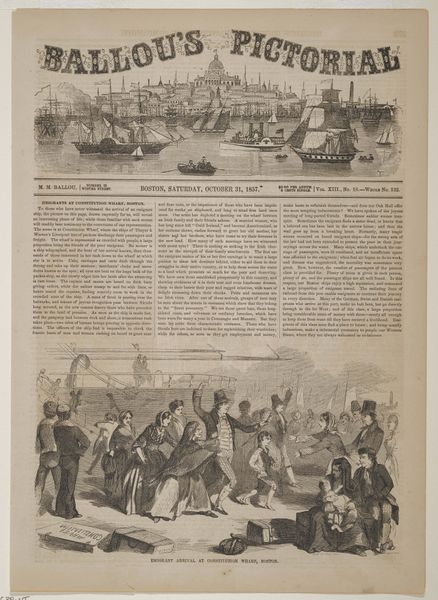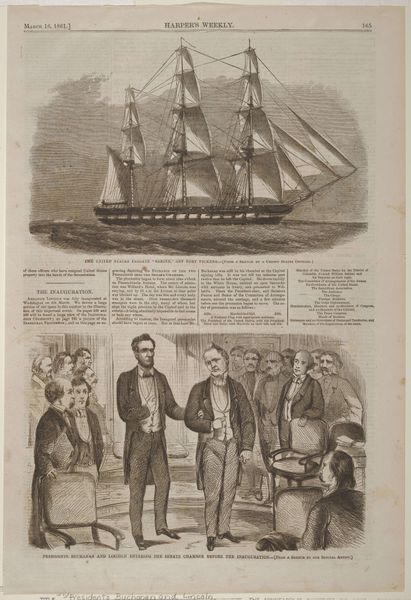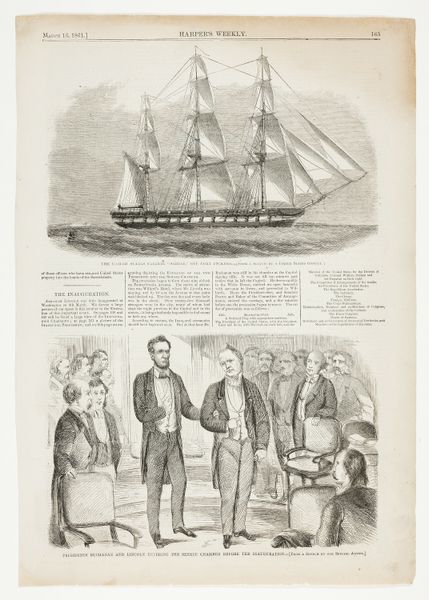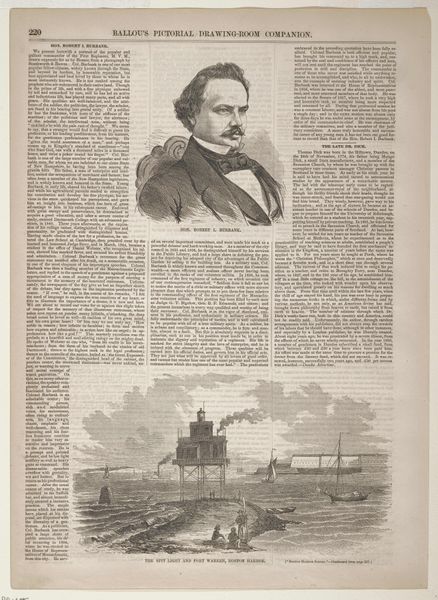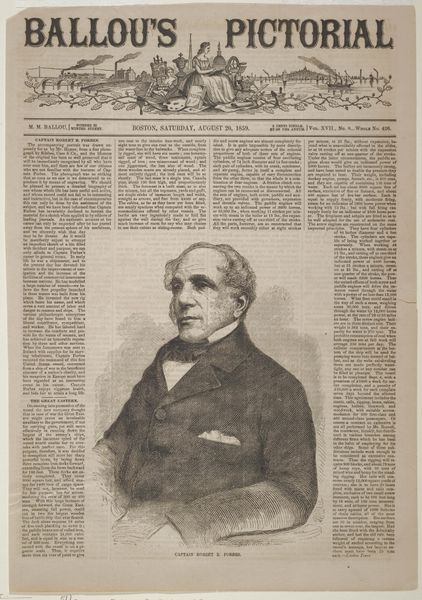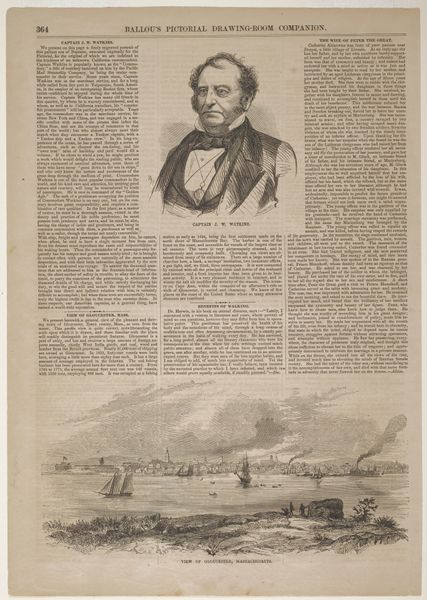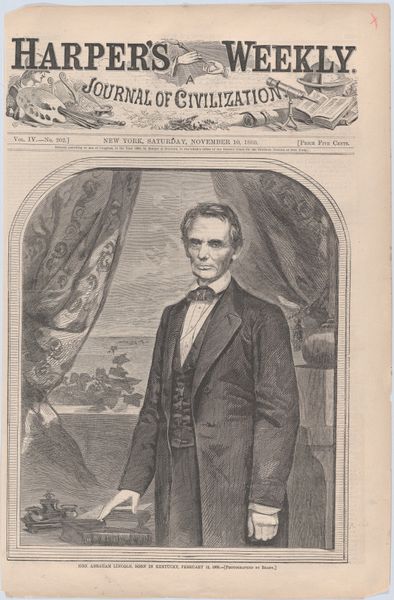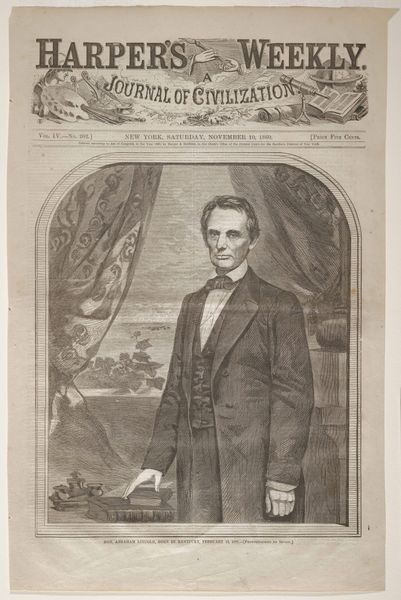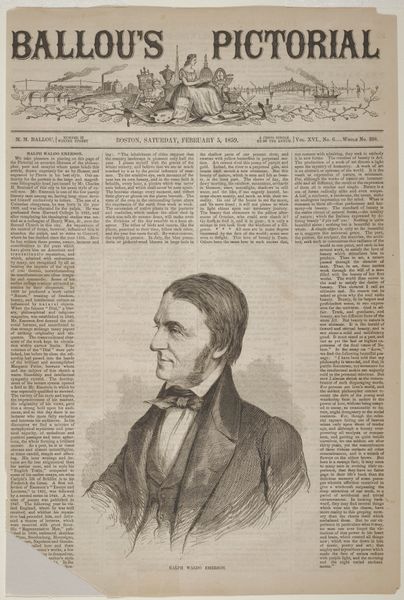
print, wood-engraving, engraving
#
portrait
#
16_19th-century
# print
#
united-states
#
history-painting
#
wood-engraving
#
engraving
Dimensions: 6 15/16 x 5 15/16 in. (17.62 x 15.08 cm) (image)15 x 10 3/4 in. (38.1 x 27.31 cm) (sheet)
Copyright: Public Domain
Curator: Winslow Homer gives us this full-page wood engraving from 1857 entitled "Rembrandt Peale," and I immediately notice the stark black and white and the crisp detail. What's your initial take? Editor: My first thought is how this image is layered like a collage. There's a portrait floating in a sea of text and maritime scenery. It creates a strange but compelling juxtaposition. Curator: It's interesting you say collage; there is definitely a layering happening. That central portrait of Peale pulls you in, but then you're bombarded with the details in the surrounding article. And notice above, Homer included a bird’s-eye view of a bustling harbor under the masthead of Ballou's Pictorial. I sense a tension between commemoration and news. Editor: I am drawn to that harbor. The ships and tiny figures almost romanticize this period. It is also odd. Is it Boston? All those sails, belching smoke…symbols of commerce and ambition. Does it clash with the aging statesman looking up at the sky? I almost feel he’s asking if it was all worth it. Curator: It makes me think about cultural memory and how fleeting fame can be. This wood engraving served as a means of memorializing Peale, enshrining him within a historical context, while simultaneously showcasing Homer’s illustrative talent, not yet knowing what an impact he will make in art. Editor: Absolutely. Looking at it from today’s perspective, this image also offers some clues about American visual culture back in the day. It feels more like a collection of signifiers. Peale representing art and history. The harbor conveying progress. Each loaded symbol points toward a collective identity they were crafting at the time. Curator: It also makes you wonder about the role of popular media back then. Wood engravings like these helped shape public opinion, and memorialize people for wider audiences. Editor: Absolutely, there is a blending here: the portrait itself and all the other historical references seem intertwined. All elements connect to something larger—they wanted to convey a sweeping view of the nation’s identity at this stage. Very telling… Curator: Yes. Ultimately, Winslow Homer invites us to contemplate memory, representation, and the complex interplay between an individual's legacy and a nation’s ambitions. Editor: It's a visual artifact that asks what exactly endures of an era. What will outlast all of our furious building, expanding, publishing? It seems we have similar questions, centuries later.
Comments
No comments
Be the first to comment and join the conversation on the ultimate creative platform.
